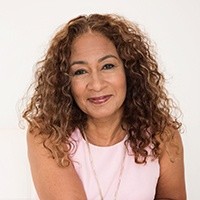How learning from the news can shape and inspire young minds
You can watch the full talk with Alison Kriel, here.
Picture News founder, Katie Harrison, was thrilled to be joined by TEDx speaker and former school leader and CEO, Alison Kriel, for the latest Picture News webinar.

Alison spoke about her time in headship and how she used her role to inform and inspire her pupils about themselves, others and the world around them.
This blog summarises Alison and Katie’s talk, and highlights the main takeaways for you to consider and implement in your own education setting.
Teaching the news: why?
The session began with Katie’s exploration of the importance of being open about the news with children in today’s world.
In previous eras, when the smart phones and technology we have today were not available, accessing the news was something to opt in to, to seek out.
Now, with social media, apps, and the internet all accessible with the tap of a screen in our palms, the news is virtually unavoidable.
This is something to think about when assessing how to cover the news in school.
Children are likely exposed to the news more than we first may realise, so it’s our job as educators to ensure they are well informed, and that they can learn about reliable news sources.
Katie spoke passionately about providing children opportunities to learn from the news. Here are just some of the wonderful benefits of news-based learning she mentioned:
- News topics can be influential and powerful in inspiring children to act, make a difference, and determine new interests and passions.
- Teaching the news is versatile and diverse, and can be useful across many subject areas.
- Using real life learning in an accessible and inclusive way helps children to be informed and engaged as productive citizens.
Next up was our very special guest, Alison Kriel!
Alison’s inspirational talk motivated us all at Picture News, and the educators who joined us.
“What could we do within the curriculum so that children could be successful learners?”
Alison recalled her days in headship, and her focus on creating a sense of belonging for all pupils. She believes that a strong sense of belonging improves children’s learning as they are able to better focus on their work, rather than worry about their place in the school community.
To create this belonging, Alison decided to implement real-life, news-based learning for her pupils.
She argued that avoiding teaching the news is a battle, as children are constantly surrounded by it in different forms.
As a headteacher, she made it her mission to make sure children could be informed, rather than misinformed, and to encourage them to take responsibility for their learning, being aware, and developing a sense of belonging.
She knew that for children to be successful learners, they needed to open their eyes to the world around them.
Learning about ourselves and others
Working in a school with children from diverse backgrounds and cultures, Alison outlined that to teach empathy, her pupils needed an understanding of themselves and their peers, and their different cultures and heritages, which influence their worldview. From her years of experience, she found that using local and national news was the best way to do this.
Having open, safe discussions with children about news topics allowed them to ask respectful questions, even if the children’s perspectives differed from each other.
Alison explained that in her school, she presented a news-based assembly each week. Real-life learning was extended in her setting with guided reading sessions, where children would explore news articles as they read for a purpose.
“If we want learning to make sense, then it needs to be put into a current context, and teaching it through the news is an important way to do that.”
Alison stressed the importance of listening or reading to understand, not to reply, in order for children to show genuine empathy to others.
“You want children to know that they are young people who are contributing to making the world a better place. Because when they do that, they will take care of each other, they’ll take care of us, and they’ll take better care of the planet. So we can’t ask children to do these things if we don’t enable them to have the language, the empathy, and to have the understanding of where places are, and why we are as we are.”
Planning and consideration
Alison did not shy away from discussing the responsibility that comes with sharing the news, and prompting deep thinking and discussion, as an educator. Here’s her insight on considering how the news topic may be received, and anticipating the impact of your assembly content.
“Sometimes the biggest problem is the fear of getting it wrong. I found that I would never have risked doing a [news] assembly without considered thought. If you decide to have a weekly current affairs assembly, then do make sure that you take time to really think about what it is you’re going to do.”
Final thoughts
To end our summary of the insightful talk, here’s one last quote from Alison.
“If we’re going to teach children that they are the world, then we have to teach them about the world. Doing it through media, by making sure they are informed about the world we live in, is the only way that I could see into doing that.”
You can watch the full talk with Alison, here.
